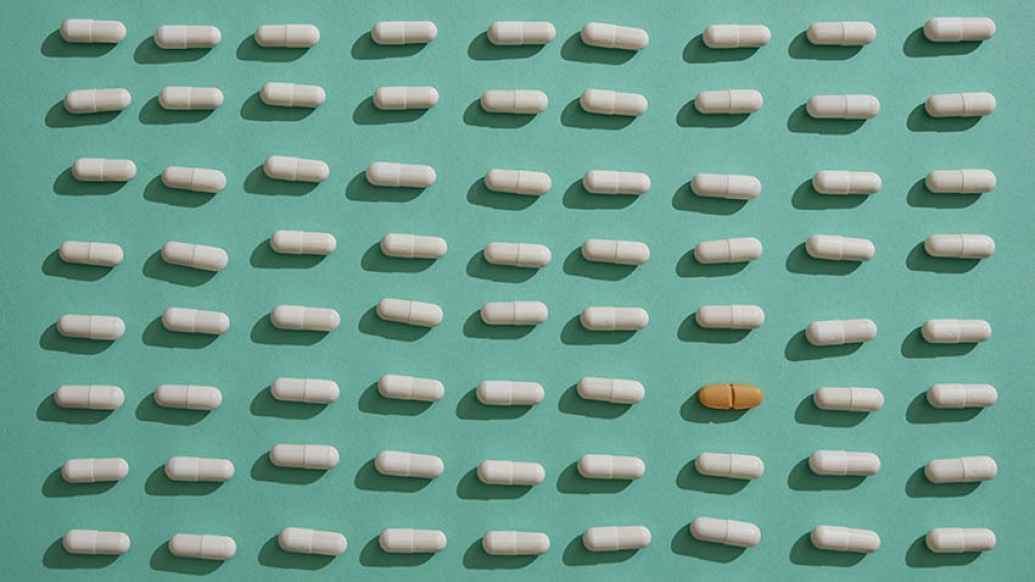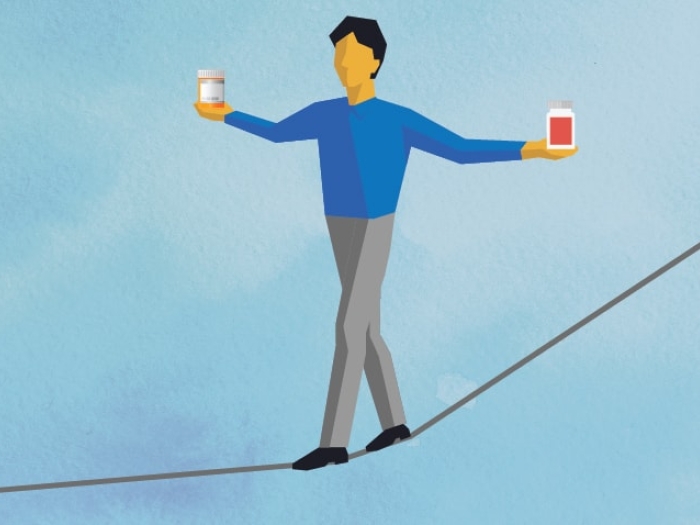70% of spending on “partial orphan” drugs – those approved to treat both rare and common diseases – goes toward treatment of common diseases.
3:53 PM
Author |

For more than 30 years, the U.S. government has encouraged drug companies to develop new treatments for rare diseases that affect fewer than 200,000 Americans, and to see if existing drugs might also be effective for these diseases.
This "orphan drug" program has led to new options for patients worldwide, under special rules that give drug companies financial incentives as a way of making up for a potentially small market.
But a surprising number of orphan drugs are among the world's top-selling drugs – including several so-called "partial orphan drugs" approved to treat both rare and common diseases. A new study, led by a team of University of Michigan and Boston University researchers, looks at how much spending on partial orphan drugs actually goes to treat rare diseases.
The study, published in the March issue of the journal Health Affairs, finds that just 21% of the total dollars spent in 2018 on 15 top-selling partial orphan drugs went to the treatment of rare diseases, while more than 70% went to the treatment of common diseases.
For one of the drugs, a chemotherapy drug called pegfilgrastim (Neulasta), only 0.6% of dollars spent were for its rare disease use. The study is based on a database of insurance claims data for 12.8 million patients under age 65 who had private insurance.
MORE FROM THE LAB: Subscribe to our weekly newsletter
"Our findings raise questions regarding whether the benefits of orphan drug status are always warranted for partial orphan drugs," says Kao-Ping Chua, M.D., Ph.D., lead author of the new paper and a health services researcher at U-M.
Orphan first or second
Chua says the implications of the study differ depending on whether a drug was first developed for a rare disease, or if it was first developed to treat a common disease and was found to be effective in treating a rare disease later on.
Among the 15 drugs in the study, eight received U.S. Food and Drug Administration approval for a rare disease first, and about 40% of spending on these drugs was for common diseases.
Chua calls this large proportion of spending for common diseases potentially concerning. Getting approval from the FDA as an orphan drug first is a lower bar for drug companies to clear, because smaller numbers of participants and lower levels of evidence are required for clinical trials of rare-disease drugs. Additionally, rare-disease drugs typically start out with high prices, which can potentially be charged when the drug crosses over to the larger market of patients with common diseases.
SEE ALSO: Big Costs for Small Patients with Rare Diseases, Study Finds
As a result, companies might be incentivized to seek rare disease approval first, even if they suspect a drug or biological compound might work against a common disease. According to Chua, this "orphan-first strategy" would result in profits that were not intended by the Orphan Drug Act.
Companies can also seek an orphan designation for an existing, approved medication as a way of getting additional protection from competition for a time.
For the seven partial orphan drugs in the study that started as common disease treatments – such as adalimumab, sold as Humira – only 1 in 12 dollars was spent on rare diseases.
Our findings raise questions regarding whether the benefits of orphan drug status are always warranted for partial orphan drugs.Kao-Ping Chua, M.D., Ph.D.
"On the one hand, it's good that common-disease drugs with established safety records are being repurposed for rare diseases," says Chua. "At the same time, it's less expensive to re-purpose an existing drug than to bring a new drug to market. It's not clear that sponsors should receive the same level of orphan drug benefits as a rare-disease drug that would not have been developed without these benefits."
The costs of granting orphan drug status to partial orphan drugs can be substantial, Chua says, in part because insurance companies are hesitant to exclude orphan drugs from their formularies, a list of drugs covered by the insurer.
Like Podcasts? Add the Michigan Medicine News Break on iTunes, Google Podcast or anywhere you listen to podcasts.
Orphan drugs – including partial orphans of either kind – are also exempt from discounts usually required for drugs sold to hospitals participating in the 340B Drug Pricing Program. That program subsidizes medication costs for providers that serve a disproportionate share of underserved patients.
The authors of the new paper suggest a number of policy changes, including eliminating the 340B exemption for orphan-designated drugs and reducing the level of orphan drug incentives for partial orphan drugs.
"The tradeoff is that each of these changes could lower investment in discovering new treatment options for people with rare disease," Chua says.
SEE ALSO: What's Threatening Access to a Key Tool in Fighting the Opioid Epidemic?
Chua, who is a pediatrician at Michigan Medicine, U-M's academic medical center, and his colleagues previously published data on orphan drug spending for children, and on the percentage of all orphan drug approvals that were granted for drugs used in rare pediatric conditions. Chua is a member of the Susan B. Meister Child Health Evaluation and Research Center and the U-M Institute for Healthcare Policy and Innovation.
In addition to Chua, the new paper's authors are U-M Law School student Lauren E. Kimmel, who worked as a research assistant at the time of the study, and Rena M. Conti, Ph.D., an associate professor at Boston University Questrom School of Business and the associate director of Pharmaceutical Policy at the Institute for Health System Innovation & Policy at Boston University.
Paper cited: "Spending for Orphan Indications Among Top-Selling Orphan Drugs Approved to Treat Common Diseases," Health Affairs. DOI: 10.1377/hlthaff.2020.01442

Explore a variety of healthcare news & stories by visiting the Health Lab home page for more articles.

Department of Communication at Michigan Medicine
Want top health & research news weekly? Sign up for Health Lab’s newsletters today!





